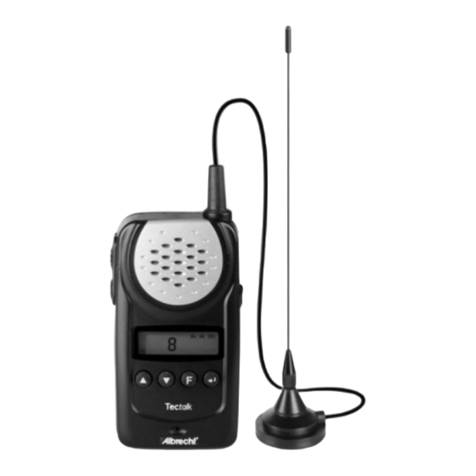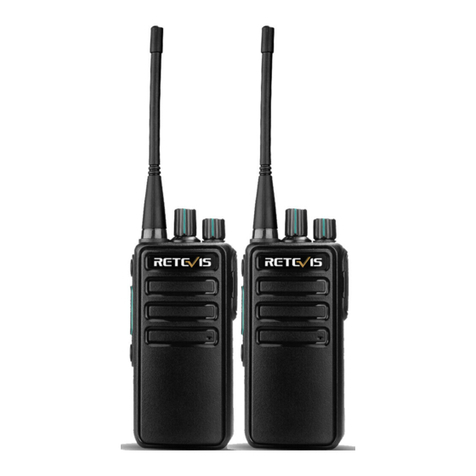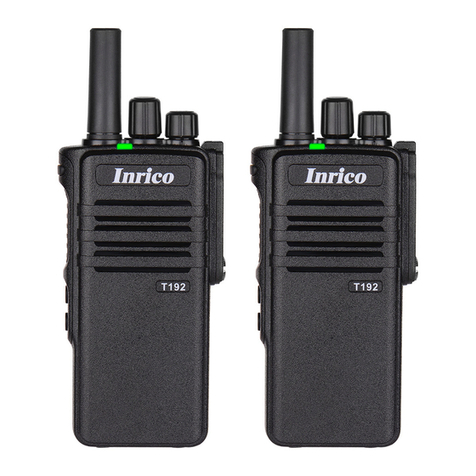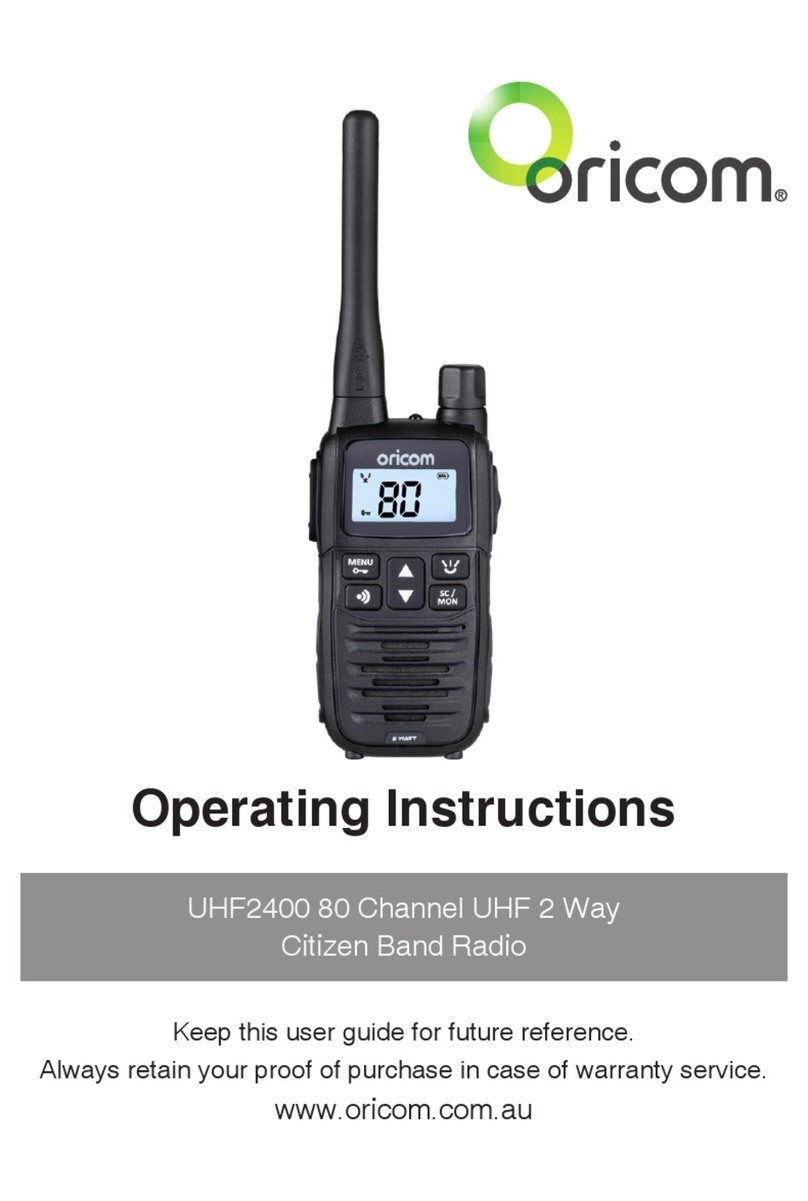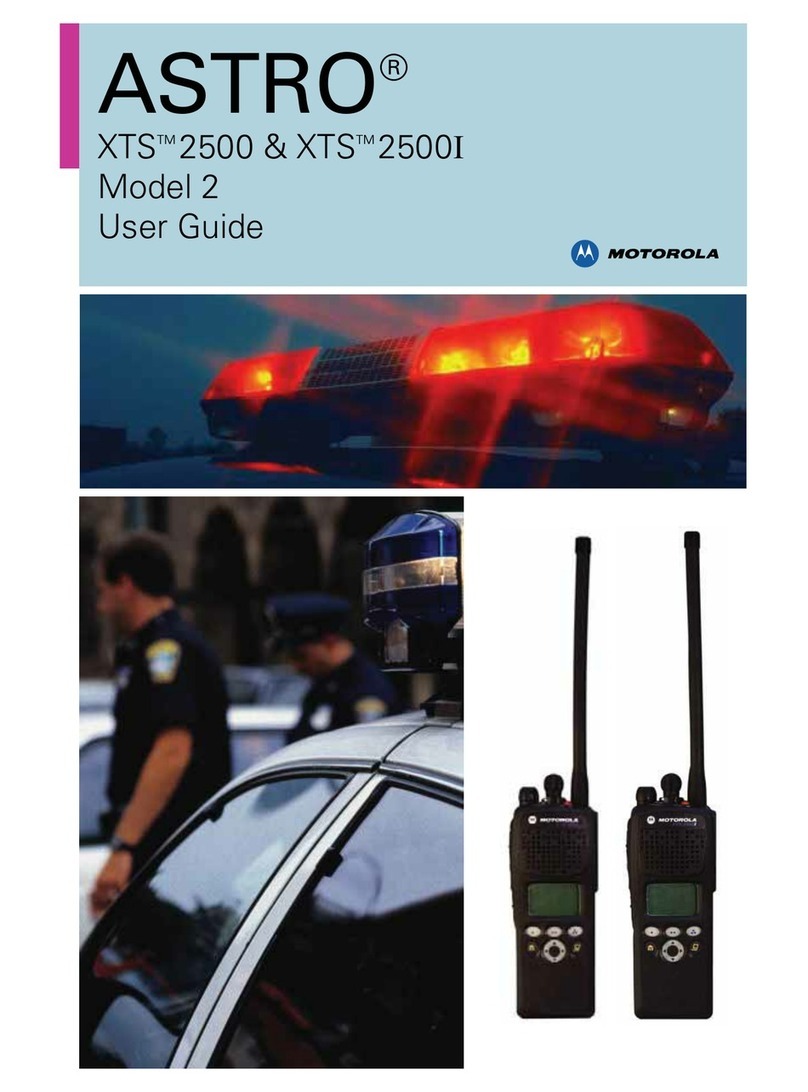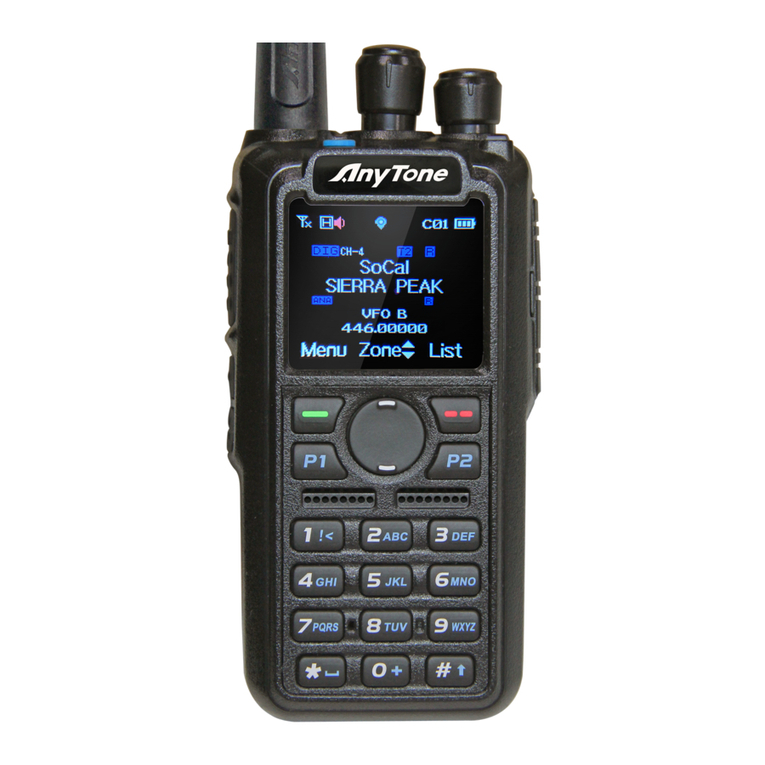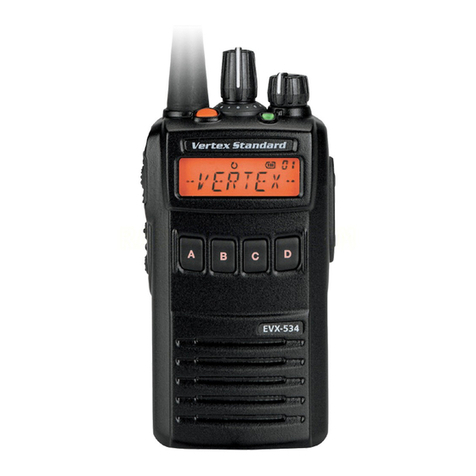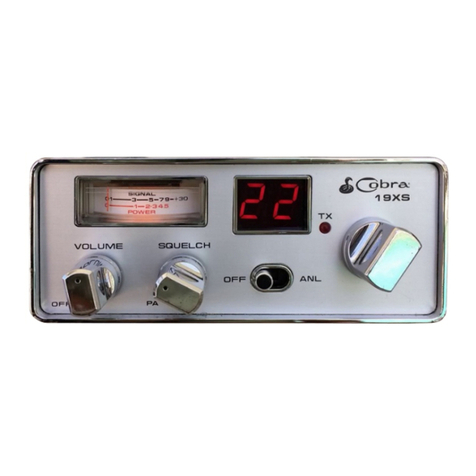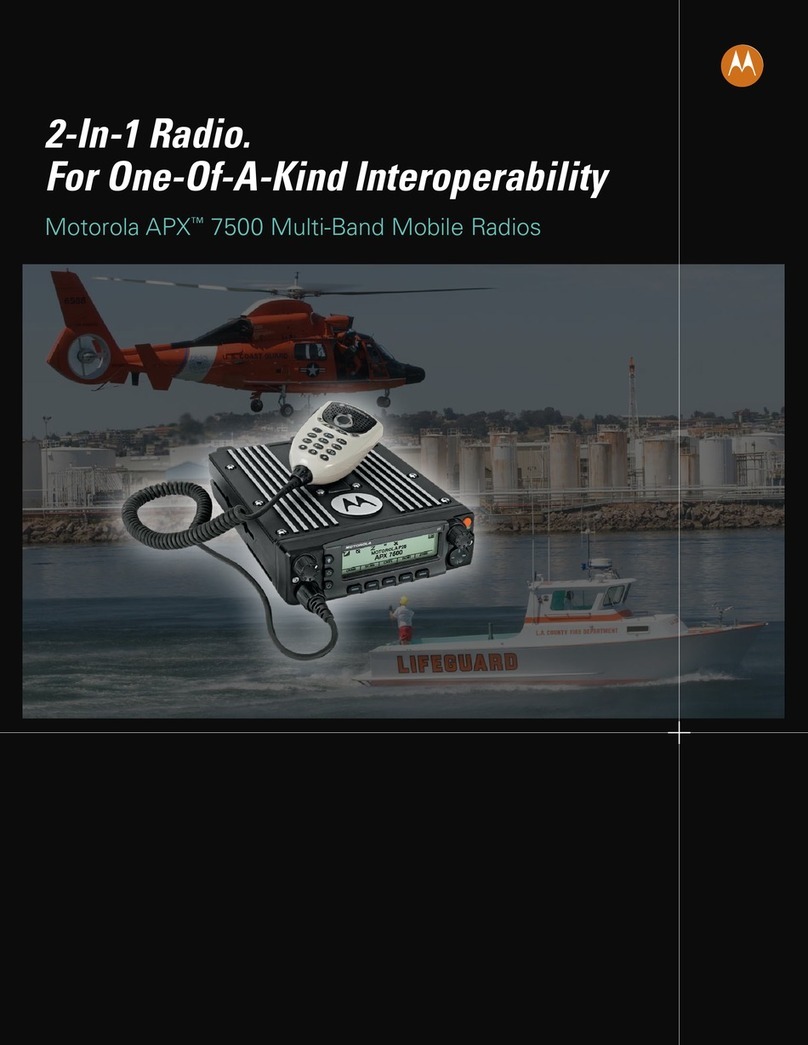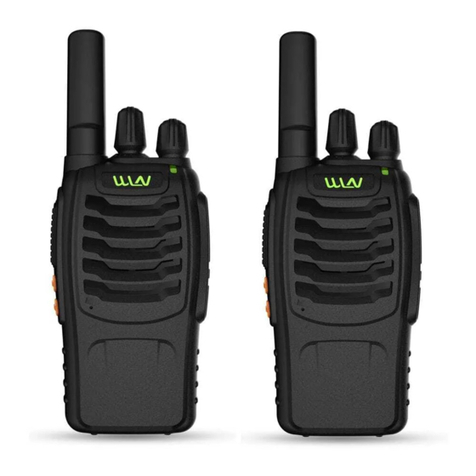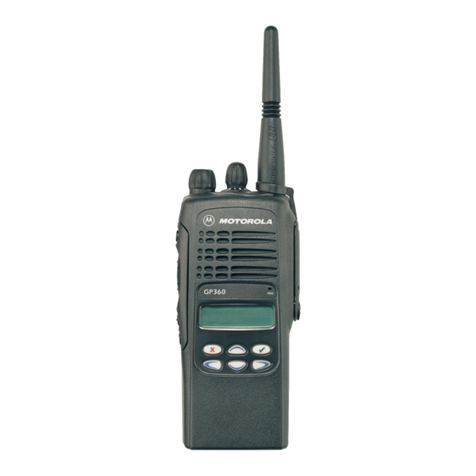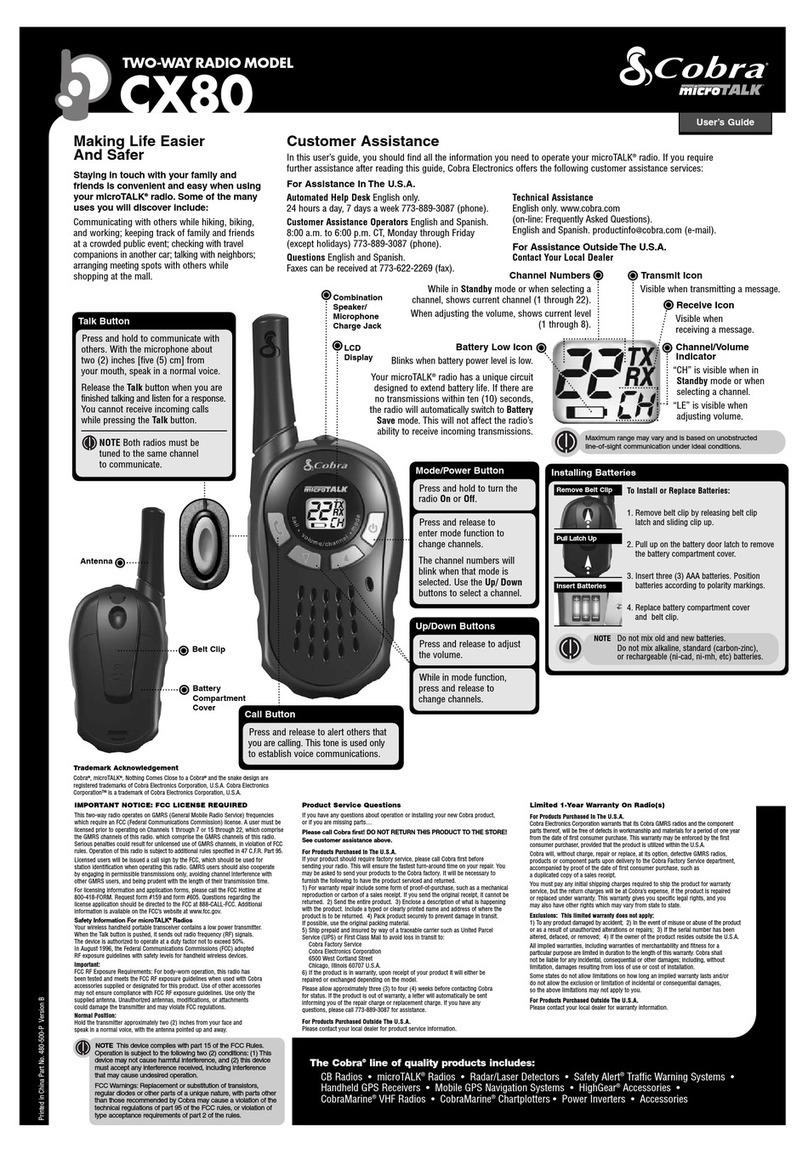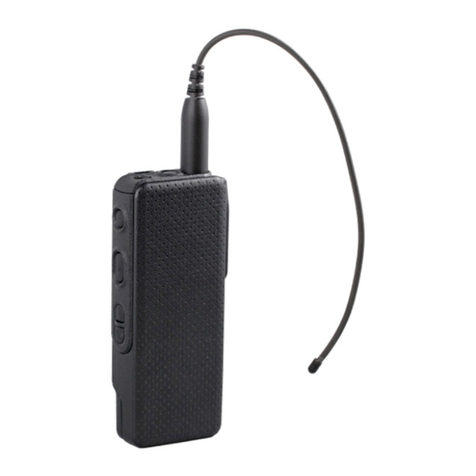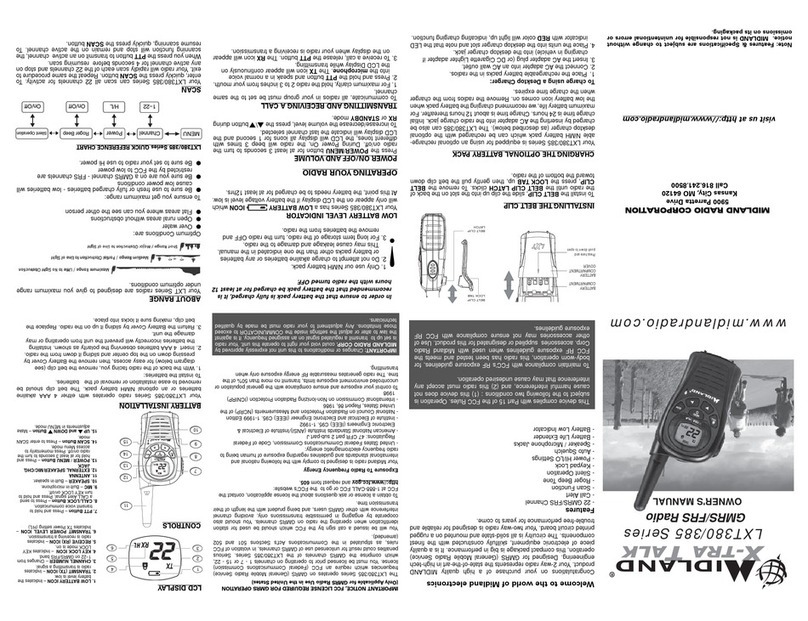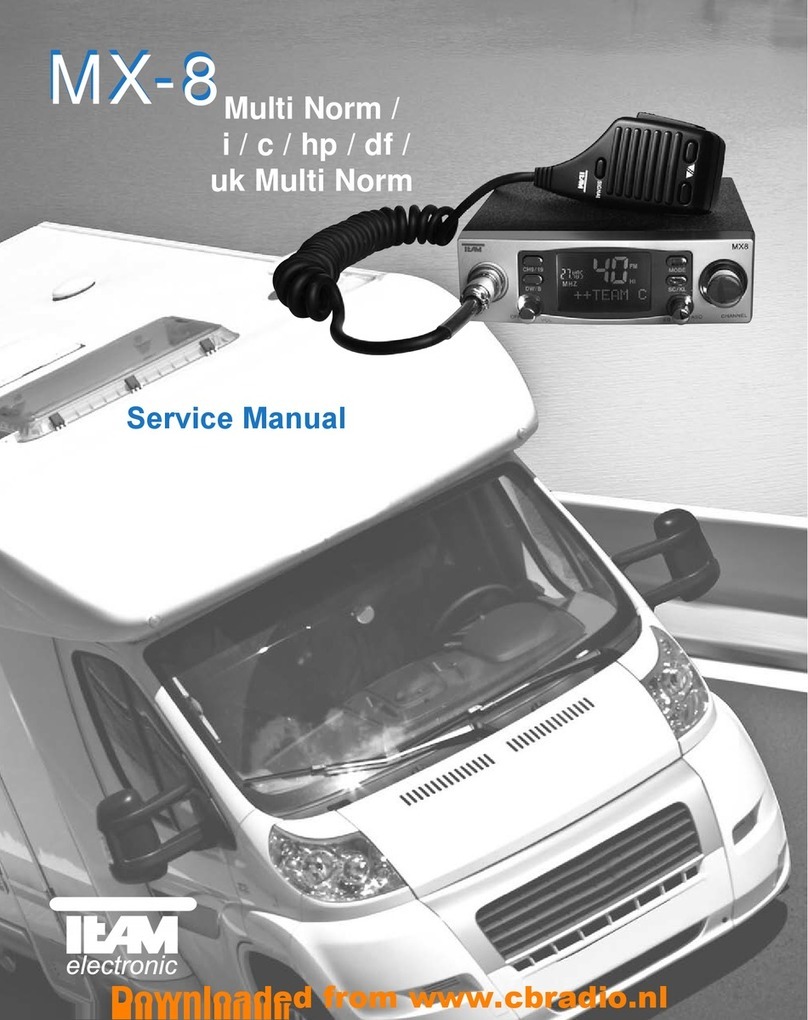SmartTrunk Systems SmarTrunk II Installation guide

SmarTrunk II
System Overview
Revision 9
March 2004
Benelec Pty Ltd
Unit 2 / 581-587 Gardeners Rd
Mascot NSW 2020

System Overview
2
About SmarTrunk Systems, Inc.
SmarTrunk Systems, Inc., was founded in 1979 as Selectone Corporation, a
privately held California corporation, and quickly became a leading manufac-
turer of tone signaling and voice encryption equipment for the mobile com-
munications industry.
In 1992, the company introduced the original SmarTrunk system as a low-
cost trunking protocol for radiotelephone systems in developing countries. In
1994, a second- generation system was introduced,
SmarTrunk II, with more features and a faster, more secure digital signaling
protocol. Since then, SmarTrunk II has become an industry standard radio
trunking protocol in more than 98 countries.
Recognizing the growing importance of the SmarTrunk II product line, the
company’s corporate name was changed to SmarTrunk Systems, Inc., in
early 1996. In June 2000, the company’s original Selectone product line was
sold to Communications Specialists, Inc.
In July, 2001, after nearly 30 years in the land mobile business, SmarTrunk’s
founder and CEO retired and sold the company to Ranger Communications,
Inc. SmarTrunk Systems, Inc., is now a wholly owned subsidiary of Ranger
Communications, Inc. of National City (San Diego), California. Ranger’s 30+
years of experience in the manufacturing business, furthers SmarTrunk’s
position as the leading supplier of radio trunking systems. Since 2001, the
ST-510 SmarTrunk II Switch and the SmarTrunk II feature set has been
greatly expanded.

3
SmarTrunk Systems, Inc.
Table of Contents C
Section 1 • Things You Always Wanted to Know About Trunking…5
Introduction ....................................................................................................................... 5
What is Trunking? ............................................................................................................. 5
Trunking in Land Mobile Radio (LMR) Systems ................................................................. 5
The Trunking Advantage ................................................................................................... 6
Rules Regarding VHF and UHF Trunking in the United States ........................................... 7
Centralized vs. Decentralized Trunking Systems ............................................................... 8
Section 2 • System Highlights ................................................... 9
Wireless Solutions Supported by SmarTrunk II .................................................................. 9
System Requirements .................................................................................................... 10
Section 3 • Types of Calls and Methods of Operation .................11
Using SmarTrunk II For Radio Dispatch Applications ................................... 11
Mobile to Group Call ....................................................................................................... 11
Mobile to Mobile Private Call .......................................................................................... 12
Mobile Operator Call ...................................................................................................... 12
Using SmarTrunk II for Telephone Interconnect Applications ....................... 13
Mobile to Telephone (Landline) Call ................................................................................ 13
Telephone (Landline) to Mobile Call ................................................................................ 14
Emergency Telephone Number Call ................................................................................ 14
Section 4 • SmarTrunk II Controller ..........................................15
Expanded Capacity ........................................................................................................ 16
Databus Communication between Controllers ................................................................16
Greater Ease of Programming .......................................................................................17
Enhanced Telephone Interconnect Features .................................................................... 17
Options and Accessories ............................................................................................... 18

4
SystemOverview
Section 5 • SmarTrunk II Logic Boards with Omni™ Features .....19
Channel Banks ...............................................................................................................19
Multiple PTT Groups ....................................................................................................... 20
Multiple Receive Groups ................................................................................................. 21
SmartScan™ .................................................................................................................21
Dialed Number Display .................................................................................................. 21
Positive Radio Kill .......................................................................................................... 21
Turbo SpeeDial™ ........................................................................................................... 22
Memory Speed Dial........................................................................................................ 22
Caler ID .......................................................................................................................... 22
Speech Scrambler .......................................................................................................... 22
Section 6 • Beyond the simple “Controller only” System ............23
Introduction ..................................................................................................................... 23
Key system features ....................................................................................................... 23
ST-510 Components ...................................................................................................... 24
System Operation .......................................................................................................... 25
System requirements...................................................................................................... 26
Features and services provided ..................................................................................... 26
SmarTrunk II upgrades ....................................................................................................33
Network Interconenction..................................................................................................36
Linking to remote areas ..................................................................................................37
Optional Features ........................................................................................................... 38
Section 7 • Frequently Asked Questions ....................................39
Appendices .............................................................................43
Appendix A - The SmarTrunk II Logic Board Compatibility Chart ................. 44
Appendix B - SmarTrunk System Application Notes (SANS) ........................ 50
Appendix C - SmarTrunk vs. LTR ..................................................................52
Appendix D - SmarTrunk Network Diagram ................................................... 57

5
SmarTrunk Systems, Inc.
1
SECTION
Things You Always Wanted to Know
About Trunking…
Introduction
This section is directed to the system owner who is considering
converting conventional 450 MHz repeaters to trunked operation.
Perhaps you are an operator of shared community repeaters who would
like to achieve higher customer loading (and greater profits) from your
existing system. Or perhaps you operate a private “campus” system of
two or more VHF or UHF conventional channels used for plant security
or maintenance. Either way, converting your conventional channels to
trunked operation will significantly increase your system capacity while
providing privacy, system security, and advanced features such as
selective and emergency calling.
What is Trunking?
The term “trunking” originated decades ago in the telephone industry to
describe the process of selecting one clear communications path from
many possibilities. It is based on the premise that if 100 users are
sharing a certain communications network, only 10 users will actually
use the network at any one time. Therefore, it is not necessary to install
100 trunk lines to serve 100 telephone customers; only 10 lines will be
sufficient to provide a high level of service.
Trunking in Land Mobile Radio (LMR) Systems
Trunked LMR systems were introduced in the early 1980’s on the same
premise. By “trunking” together groups of frequencies (channels), a
communications network could serve a large number of users with a
very high level of service.
The efficiencies and features of trunked radio are well known to
experienced 800 MHz system operators.
“The Trunking Advantage”
¨Efficiency
¨Privacy
¨Selective Calling

System Overview
6
Figure 1 - Which kind of line would you prefer to stand in?
A. B.
Queues Clerks Single Queue Clerks
The primary advantages of any trunked radio system can be
summarized as follows:
¨Automatic selection of a clear channel: In a conventional radio
system, the user may only have access to a single channel. By FCC
regulation, if the user wishes to make a call, he must first monitor the
channel to make sure it’s clear. If the channel is busy, the user must
continue to monitor the channel until the co-channel user has
terminated the conversation. By contrast, in a trunked system the
channel selection is automatic. When the user initiates a call, the
trunking system electronically “monitors” each channel and selects one
clear (unused) channel from many possible channels.
¨Channel Privacy: In a conventional system, other co-channel users
can easily eavesdrop on conversations. In fact, channel monitoring is
required by the FCC when initiating a call, as described above. In a
trunked system, other system users cannot listen in on other
conversations. A radio can only join a conversation when directed by
the trunking controller.
¨Channel Exclusivity: In a conventional system, discourteous co-
channel users can “jump” on a channel in the middle of another
conversation, thereby interrupting the call in progress. In a trunked
system, once a channel is selected, it becomes exclusive for the
duration of the transmission. Other users cannot interrupt or interfere
with the call.
¨Selective Calling: In most conventional radio systems, selective
calling is an expensive add-on option or may not be available at all. On
the other hand, some trunked radio systems provide extensive
selective calling capabilities as a standard feature. This means that
users can selectively call different groups or individuals in the system.
Each user is typically assigned a unique individual ID code and one or
more group ID codes. These codes can be dialed by other users in the
system to select only the specific groups or individuals with whom they
wish to communicate.
The Trunking Advantage
The advantages of trunking can be illustrated by a very simple
example. Most of us are familiar with problem of standing in line for a
bank teller or at a ticket window, as illustrated in Figure 1 below.
Queuing analysis shows that more people (customers) can be handled
with the same level of service when all servers (channels) are available
to all customers.

7
SmarTrunk Systems, Inc.
Rules Regarding VHF and UHF Trunking in the United States
The FCC has authorized the use of “centralized” trunked systems for
VHF and UHF frequency bands
where at least one frequency must have
a Protected Service Area (PSA). This frequency is identified with a station
class designation of FB8 for the Repeater. While FB8 codes are used only
with trunked (YG or YW) systems, an FB8 frequency may not be used for
conventional systems.
Centralized trunking refers to trunking systems that use dedicated
(exclusive) control channels for data communication between the
mobiles and the trunked repeaters. In such systems, the mobiles
constantly monitor the control channel for channel assignment
instructions. When a group call is initiated, the trunking controller
transmits instructions telling the mobiles in the group to switch to a
voice channel assigned for that conversation. Thus, the “brains” of the
system are in the system controller at the repeater site.
Most trunking systems such as MPT-1327, Motorola’s Smartnet, E. F.
Johnson’s LTR. Trident’s Passport, etc are centralized systems. As they
are designed to use clear frequencies, these trunking formats are not
as well suited as SmarTrunk or as easy to license at VHF and UHF
frequencies because of the lack of exclusive channels in those bands.
To get around this problem, the FCC requires potential centralized
system operators. . . “to obtain some form of exclusivity in their
respective service areas”. This requires the operator to obtain written
permission from all other licensees within a 70 mile radius of the
proposed base station, similar to the FCC rules for telephone
interconnect in major metropolitan areas. However, due to the
frequency congestion in these bands, this requirement is extremely
difficult to meet. All other users on the proposed trunked channels and
immediately adjacent channels would have to agree to convert to trunked
operation. Since, by definition, centralized trunked systems require
exclusive channels, the other affected users would have to agree to a
simultaneous conversion of their radio systems, which would require
scrapping their conventional equipment and purchasing all new mobile
radios.
1 • Things you always wanted to know about trunking…

CentrCentr
CentrCentr
Centralizaliz
alizaliz
alized vsed vs
ed vsed vs
ed vs. Decentr. Decentr
. Decentr. Decentr
. Decentralizaliz
alizaliz
alized Ted T
ed Ted T
ed Trr
rr
runkunk
unkunk
unking Sying Sy
ing Sying Sy
ing Systemsstems
stemsstems
stems
Unlike centralized trunking systems, decentralized (scan based)
systems such as SmarTrunk II do not require exclusive channels.
Because the channel selection intelligence is in the mobiles,
decentralized systems can co-exist with conventional users on the
same channels. When a call is initiated by a mobile unit, the channel
assignment is determined by the logic in the mobile, not by a controller
at the repeater site. So if the channel is busy with a conventional user
(or even a co-channel user on another system), the mobile will consider
the channel as busy and select another channel.
Per FCC rules, all
frequencies of a de-centralized trunked system would use the less restrictive
station class designation of either FB6 or FB2, which does not require a
Protected Service Area (PSA). FB6 is for private carrier systems such as
radio dealers that would place additional users on the system. FB2 is for
private in house systems such as a manufacturing facility that would use the
system for their own use.
The advantages of decentralized system can be summarized as
follows:
¨Since they do not require exclusive channels, the onerous FCC
frequency coordination requirements described above do not apply.
¨Decentralized trunking systems have always been “legal” for use below
800 MHz because they fully comply with the FCC requirements to
monitor the channel before transmitting and do not utilize dedicated data
channels for system control.
¨Decentrallzed trunking is the only trunking protocol which will operate
on non-exclusive channels. This not only allows the system to operate
in the presence of conventional users on the same channel, but it also
allows a system operator to gradually convert conventional users to
trunked operation.
¨They are more economical due to the lower cost of both the trunking
controllers and the mobile radio equipment.
¨They require less technical training to install and maintain.
SmarTrunk Systems, Inc.
8

9
SmarTrunk Systems, Inc.
SmarTrunk II is a decentralized two way radio trunking system that is widely used both for
telephone interconnect and business dispatch applications at frequencies below 800 MHz.
First introduced in 1994, SmarTrunk II combines a proprietary digital signalling format
with existing two way radio technology—creating a communications system that is low cost, yet
provides many of the features of higher cost trunked radio systems.
Today SmarTrunk II provides local area wireless solutions to over 500,000 subscribers in
over 98 countries throughout the world. Due to its growing popularity, SmarTrunk II is sold in
partnership with international radio manufacturers such as ICOM, Kenwood, Motorola and Vertex.
Wireless Solutions Supported by SmarTrunk II
Virtually any organization which seeks to provide local area communi-
cations can benefit from SmarTrunk II
:
X
Community repeater operators can upgrade to group dispatch and
selective mobile to mobile calling to existing customers or expanding
markets.
X
Rural telephone operators can provide telephone service to individual
subscribers in remote areas without investing in the enormous cost of a
wireline or cellular infrastructure.
X
Radio dealers can offer a combination of telephone and radio dispatch
services, depending on the needs of individual customers.
X
Large industrial companies can use SmarTrunk II as a wireless PABX,
connecting all employees, in addition to supporting group calling
capabilities.
APPLICATIONS
•Small police and fire departments •Government agencies
•Public telephone systems •Mining operations
•Large industrial manufacturing facilities •Oil & gas pipeline operations
•Colleges or university campuses •Petro chemical operations/oil refineries
•Airports •Forestry and fishing fleets
•Casinos and Hotels •Hospitals
SECTION
2
System Highlights

System Requirements
A SmarTrunk II radio trunking system employs low cost radio
communications equipment and SmarTrunk II technology, which is
installed at both the base station and the subscriber radios.
The base station equipment required for each channel consists of a
SmarTrunk II controller connected to a standard VHF or UHF radio
repeater. For telephone interconnect applications, the controller is
also connected directly to a standard telephone line via a RJ-11 jack.
Each channel can support one individual conversation. Therefore, a
three channel system can support
three simultaneous private
conversations.
Since SmarTrunk II is an “overlay”
system, each of the subscriber
radios must have a customized
logic board to control the radio’s
operations. SmarTrunk Systems,
Inc. manufacturers customized
logic boards for over many
different radios. Please see the
“SmarTrunk II Logic Board
Collection” (Appendix A) which
lists all the mobile and portable
radio models that are compatible
with SmarTrunk II.
10
System Overview

11
SmarTrunk Systems, Inc.
Types of Calls and
Methods of Operation
Using SmarTrunk II For Radio Dispatch Applications
Mobile to Group Call
SEQUENCE OF EVENTS:
1. Mobile subscriber presses the PTT (Push To Talk) button to initiate a
group call to the subscriber’s own group. Alternatively, mobile sub-
scriber enters desired group number followed by routing code 3 and *
on the radio keypad.
2. Mobile radio searches for an idle channel and signals the controller.
3. Base station controller acknowledges the mobile and signals all
subscriber radios that are a part of the called group.
4. Subscriber radios assigned to the called group open squelch, con-
nection is established, and a group conversation begins.
5. Any subscriber in the group presses the “#” key to terminate the call,
or repeater disconnects at the expiration of the Group Activity Timer.
SPECIAL FEATURES:
¨Automatic PTT (Push To Talk) Mode - subscribers may initiate
group calls to their own subscriber group by pressing the PTT button.
¨Call Limit Timer - programmable call limit timer on a per user
(group) basis.
¨Group Activity Timer - acts like a “hang timer” to retain channel for
the duration of a call.
¨Multiple PTT Group can be selected without keypad in some radios
(see Omni Features, Section 6).
¨Memory Speed Dial - convenient, cellular like, dialing including a re-
dial function.
¨Clear Channel Alert - notifies the subscriber when a channel be-
comes available after the subscriber has attempted to access the
system when all channels are busy.
¨Radio Kill - eliminates unauthorized users of the system.
¨Conventional Mode Operation - “talk around” communications
available in certain subscriber radios.
3
SECTION

System Overview
12
Mobile to Mobile Private Call
SEQUENCE OF EVENTS:
1. Mobile subscriber enters desired subscriber number followed by
routing code 3 and * on the radio keypad.
2. Mobile radio searches for an idle channel and signals an available
controller.
3. Base station controller acknowledges incoming call and signals
desired subscriber radio, which responds by ringing.
4. Called subscriber answers call by pressing the * key, establishing the
connection.
5. Either subscriber presses the “#” key to terminate the call.
SPECIAL FEATURES:
¨Call Limit Timer - programmable call limit timer on a per user basis.
¨Channel Privacy - other users cannot interfere with or eavesdrop on
calls.
¨Memory Speed Dial - convenient, cellular like, dialing including a re-
dial function.
¨Clear Channel Alert - notifies the subscriber when a channel be-
comes available after the subscriber has attempted to access the
system when all channels are busy.
¨Radio Kill - eliminates unauthorized users of the system.
¨Conventional Mode Operation - “talk around” communications
available in certain subscriber radios.
Mobile Operator Call
SEQUENCE OF EVENTS:
1. Mobile subscriber enters 9 and * on the radio keypad.
2. Mobile radio searches for an idle channel and signals the controller.
3. Base station controller acknowledges incoming call and signals the
established mobile operator radio, which responds by ringing.
4. When the called party answers, the conversation begins.
5. Mobile subscriber presses the “#” key on the radio keypad to termi-
nate the call.
SPECIAL FEATURES:
¨Two touch dialing to access the subscriber radio that has been pro-
grammed as the mobile operator.
¨Programmable emergency call override status.

13
SmarTrunk Systems, Inc.
Using SmarTrunk II for Telephone Interconnect
Applications
Mobile to Telephone (Landline) Call
SEQUENCE OF EVENTS:
1. Mobile subscriber dials desired telephone number followed by routing
code 1 and * on the radio keypad.
2. Mobile radio searches for an idle channel and signals an available
controller.
3. Base station controller acknowledges incoming call and dials the
desired telephone number over the landline connected to the back of
the controller.
4. When the called party answers, the conversation begins.
5. Mobile subscriber presses the “#” key on the radio keypad to termi-
nate the call.
SPECIAL FEATURES:
¨Selective Toll Restriction - programmable on a per user basis to
allow or prevent long distance or toll calls.
¨Call Limit Timer - programmable call limit timer on a per user basis.
¨Line 1 or Line 2 Telephone access - programmable access to
telephone line 1 or line 2 on a per subscriber basis.
¨Memory Speed Dial - convenient, cellular like, dialing including a re-
dial function.
¨Last Number Redial - pressing * , * on the radio keypad
automatically redials a busy number.
¨Priority Call Override - allows priority users to gain access to a
busy system.
¨Clear Channel Alert - notifies the subscriber when a channel be-
comes available after the subscriber has attempted to access the
system when all channels are busy.
¨Radio Kill - eliminates unauthorized users of the system.
3 • Types of Calls and Methods of Operation

Telephone (Landline) to Mobile Call
SEQUENCE OF EVENTS:
1. Telephone user dials the phone number of the landline connected to a
controller.
2. Controller answers the call with two beeps. Telephone user dials
desired mobile subscriber number (1-5 digits).
3. Controller signals desired subscriber radio which responds by ringing.
4. Mobile subscriber answers call by pressing the * key on the radio
keypad, establishing the connection. Conversation begins.
5. Mobile subscriber presses the “#” key on the radio keypad to termi-
nate the call.
SPECIAL FEATURES:
¨Call Limit Timer - programmable call limit timer on a per user basis.
¨Landline callers may also initiate calls to a group of mobile subscrib-
ers.
Emergency Telephone Number Call
SEQUENCE OF EVENTS:
1. Mobile subscriber enters 0 and * on the radio keypad.
2. Mobile radio searches for an idle channel and signals an available
controller.
3. Base station controller acknowledges incoming call and dials the
established emergency telephone number over the landline con-
nected to the back of the controller.
4. When the called party answers, the conversation begins.
5. Mobile subscriber presses the “#” key on the radio keypad to termi-
nate the call.
SPECIAL FEATURES:
¨Two touch dialing to access the emergency phone number pro-
grammed by the system operator. Can be programmed for police,
fire, or any other emergency telephone number.
¨Programmable emergency call priority override.
PSTN
PO-
LICE
System Overview
14
PSTN

SECTION
4
15
SmarTrunk Systems, Inc.
SmarTrunk II Controller
The heart of the SmarTrunk II Sys-
tem is the ST-853 SmarTrunk II Digital
Trunking Controller which performs all
signalling and trunking functions, including
subscriber validation and call record
accounting. The ST-853 features a
communications databus linking all the channels at a single site, an expanded memory for sub-
scriber and call accounting records and many other new features and functions that have been
requested by SmarTrunk system operators throughout the world.
ST-853 FEATURE SUMMARY
•Subscribers per system ..................................4,096
•Call records per controller ............................... 4,500
•Paging code combinations available ............... 320,000
•Communication between controllers ............... Serial databus
•Single access point for uploading ................... Yes
or downloading system data
•Programming software .................................... Menu driven PC DOS application
•Off-line programming sessions ........................ Yes
•Local transfer speed ....................................... 9600 baud
•Modem transfer speed .................................... 9600 baud
•Security password for programming ................ 2 password levels, up to 8
alpha numeric characters
•Method of assigning parameters ..................... Assigned to profiles which are assigned
to subscribers to subscriber
•Direct connect without overdial for ................... Yes
incoming telephone calls
•Total number of toll restriction ......................... 8 restricted prefixes and 8 override
prefixes per system prefixes

System Overview
16
Expanded Capacity
An ST-853 system can support up to 4,096 individual subscribers or
groups. In addition, most features are programmable on a per
subscriber basis, such as the mobile activity timer, telephone line
access, courtesy beep and expanded toll restriction options. Each
controller can store up to 4,500 call records. The programmable call
records feature insures only the desired types of calls are recorded.
In the subscriber database, each subscriber or group may be assigned
a different System ID. For radiotelephone applications, this provides
up to 320,000 paging code combinations for added security. This
feature also allows an ST-853 system to be programmed with
subscribers from other systems for roaming applications.
Databus Communication between Controllers
All of the ST-853 controllers at a site are connected through a serial
databus which enables the controllers to communicate. This allows the
subscriber database and all call records data to be accessed from a
single controller.
The databus is also used by the controllers to
automatically coordinate signaling when needed. If
multiple calls are placed simultaneously in an
ST-853 system, the signalling is coordinated to
prevent missed calls or split groups. If a call is
placed to an individual or group that is already
engaged in a call, the caller will receive a busy tone
indicating that a call is in progress. If the called
individual is out of range or powered off, a fast busy
tone is generated.

17
SmarTrunk Systems, Inc.
Greater Ease of Programming
The programming software for the ST-853 is a menu driven, PC based
application which offers much more power and flexibility than the
internal software used to program the previous controller.
¨User-friendly programming software supports off-line programming.
¨Subscriber profiles allow the calling privileges of similar subscribers to
be changed collectively.
¨Clone feature allows the creation of multiple subscribers.
¨Site View displays status information about the controllers while on-line.
¨Call records are automatically stored to disk when downloaded.
¨Enhanced call record management marks records as new or old.
¨Two-level expanded password scheme allows supervisor to control
system access.
¨Database conversion utility eliminates the need to re-key an existing
ST-852 subscriber database when converting to the ST-853.
¨External modem option offers error-free data transfer.
Enhanced Telephone Interconnect Features
The ST-853 offers enhanced telephone interconnect features which can
be used to support a variety of new applications.
¨Auto Route feature routes incoming calls to a designated subscriber
who can transfer the call to any subscriber in the system.
¨PageBack feature allows entire group to participate in outgoing or
incoming telephone calls.
¨Up to 8 restricted prefixes and 8 override prefixes can be selected on a
per subscriber basis.
¨Telephone lines may be programmed to accept incoming or outing calls
on a per controller, per line basis.
¨Voice Clears Activity Timer allows telephone users to prevent the
Mobile Activity Timer from expiring.
¨Overdial Length and Connect on DTMF * offers faster connect times for
incoming telephone callers.
¨Busy, Dialtone and DTMF # Disconnect features allows telephone
callers to terminate a call.
¨Enhanced dialing procedure supports compatibility with PBXs or
nonstandard telephone switches requiring special delays or prefixes.
¨Leading 0 Dial Click Detector reduces errors caused by line noise and
improves the ability to detect pulse overdial.
4 • SmarTrunk II Controller

Options and Accessories
502-3501 Users Guide and Programming Software - Complete
documentation and PC-DOS programming software required for
installing, aligning and programming the ST-853 controller. One P/N
502-3501 is required for each system.
ST-910 CTCSS Decoder Option - A miniature CTCSS decoder which
may be added to the ST-853 controller to provide additional protection
from intermod or co-channel interference. Recommended for use in
the United States and other areas of high RF activity or where there is
possible interference from a distant repeater on the same channel.
ST-911 Cable Assembly Option - A 4’ long (122cm) shielded cable
assembly terminated with a DB-25 connector which mates to the ST-
853. Provides all the connections necessary between the ST-853 and
the host repeater. Note: A DB-25 connector kit (without cable) is
provided with each ST-853.
ST-956 External Modem and Cable - An external high speed modem
and interface cable used to program an ST-853 site remotely over a
telephone line (if remote access is desired). This option may be used
to install a modem at the site (only one modem required per site) or at
the local computer used for programming.
18
System Overview

Kenwood ‘G’ Series Radios offer
new Omni Features
ST-865KW4
The other key component of the SmarTrunk II system is a miniature
logic board which installs inside the mobile or portable radio equip-
ment. These logic boards are custom designed for each radio and
control all the signaling and trunking functions, including scan, PTT,
and monitor. In most cases, the logic boards are easily installed by
plugging into the host radio; however, soldering may be required in
some older radios (See SmarTrunk II Logic Board Collection, Appen-
dix A).
Highlights of the Omni feature set includes Channel Banks for multi-
site applications, multiple talk and receive groups, faster channel
access, positive radio kill, and greater use of the radio’s display.
The Omni feature set is currently available for radio models from Icom,
Kenwood, Motorola, Standard, and Yaesu/Vertex (see Appendix A for
details). A summary of the Omni features is listed below:
Channel Banks
The Channel Banks feature allows
subscribers to access different sites which
may use different frequencies. Channel
Banks are accessed via the radio’s Channel
select switch i.e. Channel 1 would become
Frequency Bank 1.
By programming the frequencies of different
SmarTrunk II or conventional sites as
Channel Banks on the subscriber radio, system operators may offer access
to multiple sites or even allow the radio to operate in conventional Talk-
Around mode. To access a remote site, the subscriber selects the Channel
Bank of the desired site. The diagram shown on the left explains a typical
Channel Banks application.
19
SmarTrunk Systems, Inc.
5
SECTION
SmarTrunk II Logic Boards with Omni™
Features
Motorola Professional Series Radios
offer New Omni Features
ST-865M5
SITE #1
BANK #1
SITE #2
BANK #2
SITE #3
BANK #3
SITE #4
BANK #4
SITE #5
BANK #5
Example: Subscriber selects
bank #5 when moving to site #5.
200 km

System Overview
20
ICOM IC-F3/F4, IC-F1020/F2020 and
IC-F30/F40 offer new Omni features
ST-865IC
In order to access a SmarTrunk II site, the subscriber
must be programmed as a valid user by the system
operator of the site. Channel Banks may also be used to
access conventional channels. When a subscriber
selects a Channel Bank programmed with conventional
channels, the radio automatically enters into the
conventional mode.
This feature is useful in cases with the system operator allows
talk-around operation among the user’s radio. Talk-around
can be used for short range direct radio-to-radio
communications without going through the trunking system.
Multiple PTT Groups
The Multiple PTT Groups feature allows subscribers to call different
groups of subscribers simply by pressing the PTT (Push-To-Talk)
button. Previously, a subscriber could call only one group by pressing
PTT.
The system operator may program up to 16 Group Codes in the radio
logic board which may be selected by the subscriber by using one of
the spare function switches on the radio which becomes the group
switch when the radio is programmed for SmarTrunk operation. The
subscriber selects the desired group with the Group Switch. When the
subscriber presses PTT, the selected group is called. In addition, the
radio will receive calls placed to the selected group.
This feature enables subscribers who are not equipped with a DTMF
keypad to call different groups. In addition, this feature allows
subscribers to join
different PTT groups
on different days. For
example, changing
PTT groups is useful
in applications where
a subscriber regularly
changes project
groups or where a
mobile radio is
frequently used by
employees who are in
different groups.
Standard HX290 Portable Radio
offers new Omni Features
ST-865S4
Table of contents
